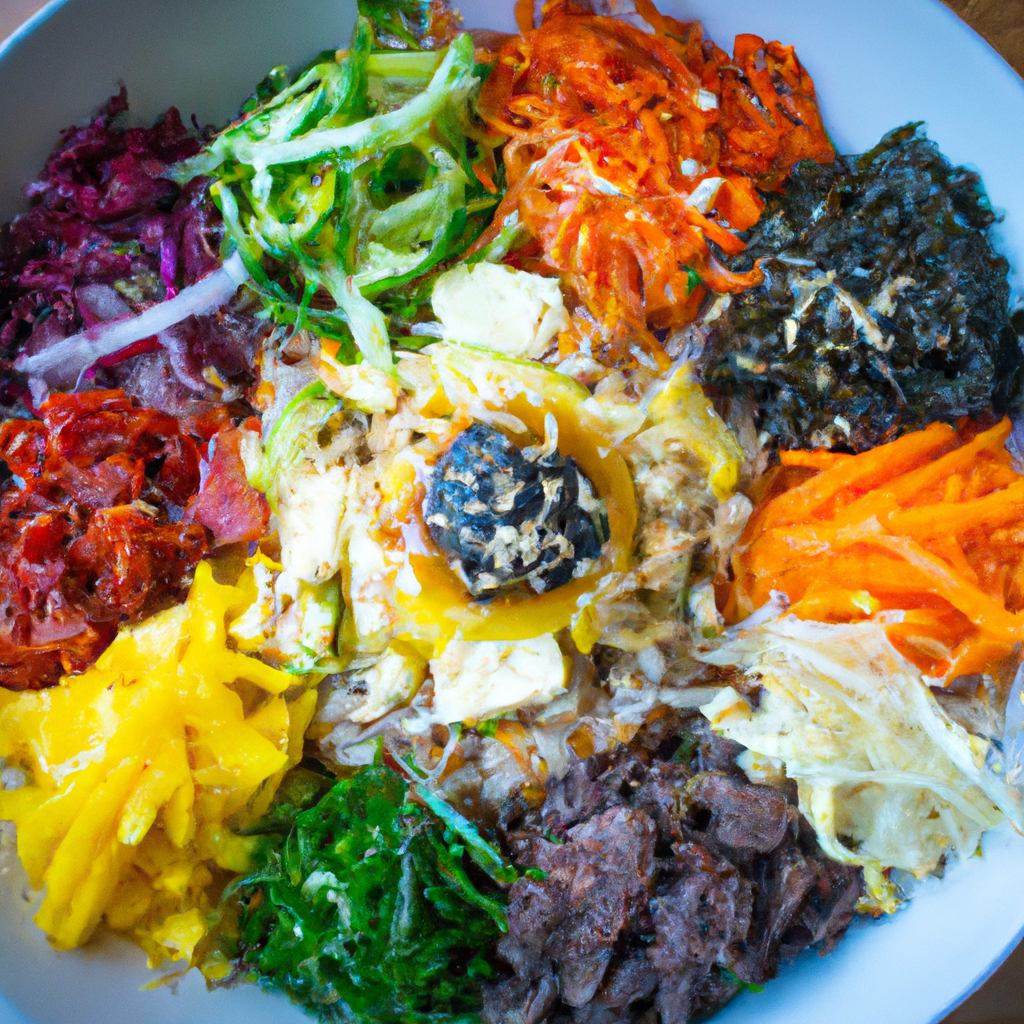Are you tired of the same old, boring bibimbap? Do you crave a burst of flavor that will take your rice bowl to the next level? Look no further! In this article, we will introduce you to some unconventional ingredients that will transform your bibimbap into a flavor explosion like never before. Get ready to tantalize your taste buds and impress your friends with these unique additions to your favorite Korean dish.

The Power of Gochujang: Spicy and Savory
No bibimbap is complete without gochujang, the quintessential Korean chili paste. This fiery red condiment adds a punch of heat and depth of flavor to your rice bowl. Made from fermented chili peppers, gochujang balances spice with a touch of sweetness and umami. Its rich and complex taste will instantly elevate your bibimbap.
Pro tip: Mix gochujang with a little bit of sesame oil, soy sauce, and sugar to create a mouthwatering sauce that will coat every grain of rice.
The Unexpected Crunch of Kimchi: Fermented and Tangy
Kimchi, a staple in Korean cuisine, is a fermented cabbage dish that adds a tangy, spicy, and slightly sour kick to any dish, including bibimbap. The crunchy texture and vibrant flavors of kimchi will give your rice bowl a delightful twist. Plus, the probiotics found in kimchi contribute to a healthy gut, making it a win-win addition to your meal.
Pro tip: Sauté your kimchi in a little bit of sesame oil before adding it to your bibimbap for an extra layer of flavor.
The Creaminess of Avocado: Smooth and Satisfying
Avocado may not be a traditional ingredient in bibimbap, but trust us, it works wonders! The creamy texture of avocado adds a lusciousness to your rice bowl, complementing the other ingredients perfectly. Its mild and buttery flavor provides a nice contrast to the spiciness of gochujang and the tanginess of kimchi.
Pro tip: Mash the avocado with a squeeze of lemon juice, salt, and pepper to create a velvety avocado spread to dollop onto your bibimbap.
The Nuttiness of Sesame Seeds: Toasted and Fragrant
Sesame seeds are a common ingredient in Korean cuisine, and they bring a nutty and aromatic flavor to your bibimbap. Toasted sesame seeds not only add a delightful crunch but also enhance the overall taste of the dish. Sprinkle them generously on top of your bibimbap for that extra burst of flavor.
Pro tip: Toast the sesame seeds in a dry pan over low heat until they turn golden brown for a more intense nutty flavor.
The Freshness of Herbs: Fragrant and Vibrant
Don’t underestimate the power of herbs in transforming your bibimbap. Adding fresh herbs, such as cilantro, mint, or basil, can elevate the flavors and add a refreshing twist to your rice bowl. The aromatic fragrance of these herbs will awaken your senses and take your bibimbap to new heights.
Pro tip: Chop the herbs finely and sprinkle them as a garnish on top of your bibimbap for an added burst of freshness.
The Umami of Mushrooms: Earthy and Savory
Mushrooms are a fantastic addition to any bibimbap, as they bring an earthy and savory umami flavor to the dish. Whether you choose shiitake, oyster, or enoki mushrooms, their unique textures and flavors will create a delightful contrast with the other ingredients. Sauté or grill the mushrooms before adding them to your bibimbap for a deeper flavor profile.
Pro tip: Marinate your mushrooms in a mixture of soy sauce, sesame oil, and garlic for a more intense umami taste.
The Sweetness of Roasted Sweet Potatoes: Caramelized and Satisfying
Roasted sweet potatoes may not be a traditional ingredient in bibimbap, but their natural sweetness adds a delightful touch to the dish. The caramelized exterior and tender interior of the sweet potatoes create a satisfying texture that complements the other ingredients in your rice bowl.
Pro tip: Toss the sweet potatoes in a little bit of honey, soy sauce, and olive oil before roasting them for an irresistible flavor.
In conclusion, by incorporating these unconventional ingredients into your bibimbap, you can say goodbye to bland and hello to a flavor explosion! From the spicy and savory gochujang to the unexpected crunch of kimchi, and the creaminess of avocado, these ingredients will take your rice bowl to the next level. Don’t forget to sprinkle on some nutty sesame seeds, add a refreshing touch with herbs, embrace the umami of mushrooms, and indulge in the sweetness of roasted sweet potatoes. Your taste buds will thank you, and your bibimbap will never be the same again!
